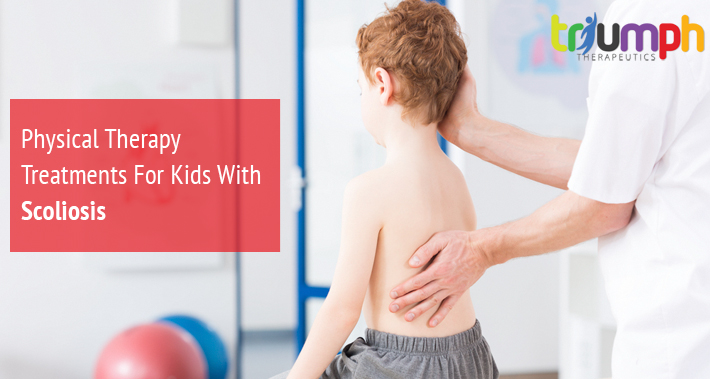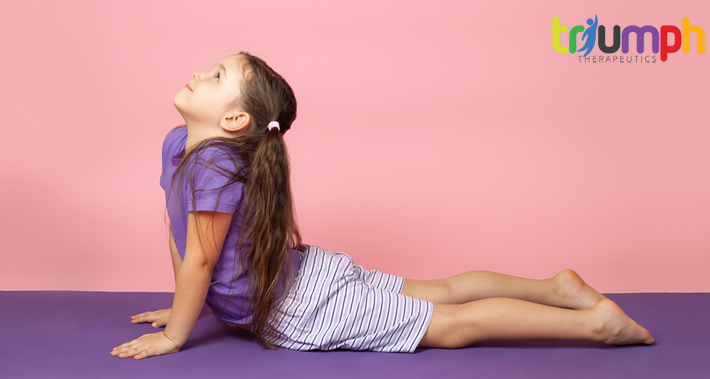Physical Therapy Treatments For Kids With Scoliosis
https://www.triumphtherapeutics.com/wp-content/uploads/2022/07/Triumph-Therapeutics-Speech-Therapy-OT-Physcial-Therapist-Washington-DC-Jul01-01-2022.jpg 710 379 Triumph Therapeutics Triumph Therapeutics https://www.triumphtherapeutics.com/wp-content/uploads/2022/07/Triumph-Therapeutics-Speech-Therapy-OT-Physcial-Therapist-Washington-DC-Jul01-01-2022.jpgIf your child has recently been diagnosed with scoliosis, you likely have plenty of questions.
For example, you might be wondering whether your child’s diagnosis will impact their quality of life.
Or perhaps you’re unsure about which therapy option will best help maximize their unique abilities.
At Triumph Therapeutics, we offer pediatric physical therapy in Washington DC that can help manage the symptoms associated with scoliosis.
This article will discuss more about scoliosis, how to identify scoliosis in your child, and how pediatric physical therapy can help.
Keep reading to find out more.
What Is Scoliosis?
Scoliosis is a condition which causes abnormal curvature of the spine.
Typically, the human spine has one curve located near the shoulders and another near the lower back.
People with scoliosis, however, often develop a spine that is curved from side to side or in a “s” or “c” shape.
Scoliosis can be structural or non structural.
Structural scoliosis is a permanent condition often caused by disease, injury, or a congenital condition.
On the other hand, non structural scoliosis is temporary and caused by conditions such as muscle spasms or inflammation.
Scoliosis is often diagnosed within the first 7 years of a child’s life.
Scoliosis Causes
Each type of scoliosis has its own unique causes.
Idiopathic scoliosis, which accounts for approximately 80% of cases, currently has no identifiable cause.
On the other hand, congenital scoliosis is present at birth, linked with a spinal deformity or other condition.
Lastly, neurological scoliosis is caused by neurological abnormalities.
If your child is receiving physical therapy treatments for cerebral palsy, for example, they might address your child’s neurological scoliosis.
Scoliosis may also be caused by genetic conditions, such as muscular dystrophy.
Girls and kids assigned female at birth are more likely than boys and kids assigned male to develop severe forms of scoliosis.
How To Tell If Your Child Has Scoliosis
The symptoms of scoliosis can depend on the severity of the condition.
If your child has scoliosis, you may notice the following general symptoms:
- One shoulder blade that’s higher or sticks out more than the other
- Uneven hips
- A rotated spine
- Breathing problems due to reduced area in chest for lungs to expand
- Back pain
If you suspect that your child might have scoliosis, a physical therapist can help with a pediatric evaluation.
Your child’s physical therapist will start by examining your child’s spine to see if their spinal segments are all aligned.
If necessary, a non invasive diagnostic tool known as a scoliometer may be used to calculate the curvature of your child’s spine.
Since your child’s growth can worsen their curvature, it’s important to begin treatment immediately following diagnosis.
How Can Physical Therapy Help With Scoliosis?
Physical therapy can help your child during all stages of scoliosis.
For example, your child’s physical therapist can help fit braces, provide support before and after surgery, as well as provide physical therapy for symptom management.
Your child’s physical therapist will come up with an individualized treatment to best fit your child’s unique needs.
Let’s take a look at some of the most common physical therapy treatments for scoliosis.
1. Range Of Motion Exercises
Range of motion exercises help improve functional limitations due to scoliosis, such as difficulty using their arms and legs.
There are several different range of motion exercises that your child’s physical therapist may teach in order to address these functional limitations.
For instance, your child’s physical therapist may instruct them to practice lunges while stretching their hands in the air.
Downward and upward dog yoga poses are another example of range of motion exercises that can address functional limitations due to scoliosis.
2. Strength Training
Your child’s physical therapist may also utilize strength training in order to help strengthen your child’s core and adjacent muscles, such as hips, shoulders, head, and feet.
The Schroth method, for example, requires the use of x rays to test your child’s curvature and come up with appropriate exercises to address their specific needs.
The Schroth method is a good option for children with scoliosis because it can help strengthen spinal musculature without the need for surgery.
3. Manual Therapy
Manual physical therapy can help your child’s joints, muscles, and other soft tissue affected by scoliosis function properly.
This method requires your child’s physical therapist to use their hands to help retrain curvature patterns.
Book An Appointment With Triumph Therapeutics Today
Having a child receive a diagnosis of scoliosis can be a frightening time.
But you’re not alone.
At Triumph Therapeutics, we can guide you through your child’s scoliosis journey and help maximize their daily function and minimize pain.
Don’t hesitate to reach out if you’d like to learn more.
Book your appointment with Triumph Therapeutics today to get started.


